Caryl Phillips - The Nature of Blood
Здесь есть возможность читать онлайн «Caryl Phillips - The Nature of Blood» весь текст электронной книги совершенно бесплатно (целиком полную версию без сокращений). В некоторых случаях можно слушать аудио, скачать через торрент в формате fb2 и присутствует краткое содержание. Год выпуска: 2008, Издательство: Vintage, Жанр: Современная проза, на английском языке. Описание произведения, (предисловие) а так же отзывы посетителей доступны на портале библиотеки ЛибКат.
- Название:The Nature of Blood
- Автор:
- Издательство:Vintage
- Жанр:
- Год:2008
- ISBN:нет данных
- Рейтинг книги:5 / 5. Голосов: 1
-
Избранное:Добавить в избранное
- Отзывы:
-
Ваша оценка:
- 100
- 1
- 2
- 3
- 4
- 5
The Nature of Blood: краткое содержание, описание и аннотация
Предлагаем к чтению аннотацию, описание, краткое содержание или предисловие (зависит от того, что написал сам автор книги «The Nature of Blood»). Если вы не нашли необходимую информацию о книге — напишите в комментариях, мы постараемся отыскать её.
The Nature of Blood — читать онлайн бесплатно полную книгу (весь текст) целиком
Ниже представлен текст книги, разбитый по страницам. Система сохранения места последней прочитанной страницы, позволяет с удобством читать онлайн бесплатно книгу «The Nature of Blood», без необходимости каждый раз заново искать на чём Вы остановились. Поставьте закладку, и сможете в любой момент перейти на страницу, на которой закончили чтение.
Интервал:
Закладка:
The state prosecutor, on the other hand, knew the Venetian senators, and he was aware of which arguments would be most persuasive with them. He began by reciting a list of similar infanticides attributable to Jews in other cities and other towns, and provided such detail that one senator became overwhelmed and had to leave the chamber. The state prosecutor then pulled out a Hebrew book and explained that it was a Book of Prayers for everyday use. He made a doctor, who knew Hebrew, read and translate a prayer that the Jews said every morning, a prayer which contained a powerful and vengeful curse against apostate Jews who had become Christians. Servadio was asked to confirm that this prayer was directed against Jews who had dishonoured their faith in the first centuries of the Christian era, and to further confirm that the prayer had been repeated for over a thousand years. This he did. The state prosecutor concluded with the assertion that surely it was the devil himself who gave these people the idea to kill innocent Christian children, and now they must die. The lawyers from Padua did not respond quickly, but eventually mounted the weak argument that the Book of Prayers was simply a narrative text used principally for the study of the various dialects it contained.
By 4 July, the senators' levels of tolerance had reached their limit. Every day the sultry summer weather had become increasingly oppressive, and the fatigued doge had already withdrawn and left in his place an elderly councilman who, in common with the other senators, was quickly tiring of these proceedings. On the morning of 5 July, he tapped the ballot box that was before him, a sign that the discussions were over and it was time to vote. The Jews were taken back to their cells and their lawyers left the room, leaving only the senators behind. A secretary approached and began to read:
Does it seem to you, sirs, on the basis of what has been said and read, that one must proceed against Servadio and Moses, usurers from Portobuffole, against Giacobbe from Colonia, all of them wicked Jews who, by mutual consent, deliberately, and with the help, advice and favours of one another, killed a young Christian boy in the home of the above-mentioned Servadio, a boy of about six or seven, a beggar from the city of Treviso, from where he was taken by Giacobbe of Colonia, as was requested by Servadio, and afterwards was brought to Portobuffole by the same Giacobbe and by another Giacobbe? Then, at the end, they extracted the blood of the young boy mentioned above and put it in the unleavened bread that they eat during their Easter, according to their detestable habit, to scorn and dishonour our God, Jesus Christ, and his Holy Faith.
They voted first on the three who had confessed: Servadio, Giacobbe and Moses. A ballot boy gave a small piece of white fabric to each senator. Then three ballot boxes were passed around — one red, one green and one white — and each senator dropped his ballot into one of these three boxes. They counted the votes: fifty-five were undecided, three voted no, ninety-four voted yes. And so it was decided, and the secretary announced the following:
Tomorrow at the usual hour, the three will be led to a barge with oars and tied down with three iron balls. In this fashion, they will be transported along the Grand Canal, from St Mark's to the Church of the Holy Cross, preceded by a town crier who will call out their names and why they are guilty. From Holy Cross, they will return by foot to St Mark's Square. Upon their arrival, they will be made to climb up on to three high pieces of scaffolding that will be erected between two columns, and all three prisoners will be secured with a long chain; thereafter, a fire will be set under them, reducing their bodies to ashes.
The decision regarding Donato, the family servant of Servadio, now a Christian called Sebastian, was then put to a vote. Thirty-one were undecided, twelve were against and ninety in favour of condemning him. It was decided that he would be sent to prison for a year, followed by eternal exile. Solomon, the son of Giacobbe and servant of Moses, newly accused of having helped his master burn the cadaver of the child in the oven, was condemned to six months in prison and six years' exile, with eighty-two votes in favour, twenty-seven against and twenty-three undecided. Fays, Servadio's son's teacher, who was accused of collaboration in making the unleavened bread with the child's blood and then eating it too, was condemned to a year in prison and ten years' exile, with thirty-five votes undecided, ten against and eighty-seven in favour. It was decided that no charges would be proffered against Sara, the wife of Servadio, or Rebecca, the wife of Moses. As soon as the sentences were announced, the state prosecutor went directly to the prison to pass on the sentences to Servadio, Moses and Giacobbe. He then ordered that they be taken directly to church and given prayer books so they could prepare themselves to die.
In Venice, on the day of an execution, it was customary for the doge to send the same lunch that he intended to eat to those who were condemned to death. However, these Jews were fasting to atone for their sins, and their leader, Servadio, had also begged his companions not to drink, despite the fact that they were tormented by thirst. Although he did not tell them, he was also thinking that their bodies would burn more easily if they were dried up, thereby reducing their suffering and maintaining a more dignified image. At noontime, from the bell tower of St Mark's, came the echo of the last chord. It was immediately followed by another that struck mournfully, for this was the bell of the Cursed that customarily accompanied the walk of the condemned. A chamberlain appeared in front of the Doge's Palace, followed by a bodyguard who escorted the three men, who were now naked to the waist and chained together. They marched between two cordons of soldiers to the barge that was waiting for them. In the middle of the barge were three iron balls. Once the condemned men were tightly secured and chained to the iron balls, the barge departed along the Grand Canal, approaching first one bank, then the other. A herald on the barge bellowed in a loud and monotonous voice: 'Here before you are Servadio, Moses and Giacobbe, Jews who killed a Christian child, dishonouring our Holy Faith.' Both banks of the canal were lined with people who, on hearing these words, shuddered and made the sign of the cross. Having passed through all of the Grand Canal, the party descended from the barge at the Byzantine column of the Church of the Holy Cross. The spectators who had arrived in great numbers protested when they realized that the condemned would not be immediately tortured, but would instead return on foot to St Mark's Square attached to a line of horses. They were being deprived of an afternoon of festivity.
Between the columns of St Mark and St Todaro, three pieces of scaffolding had been erected with very little distance between them, and on each one was placed an iron stake and a pile of wood. A cordon of soldiers held back the quickly forming crowd, while another two cordons of soldiers kept open a path for the imminent procession. While the crowd waited, they ate, drank, played cards and looked at all of the important people who showed themselves off on the terraces of the houses near the columns. Ambassadors, dukes, poets and many elegant ladies had made themselves available to view this spectacle. The setting sun began to animate the mosaics on the basilica, and then, once more, the slow tolling of the bell of the Cursed could be heard. At the far end of the square, figures appeared dressed in sacks of black cloth that went down to the ground and with large crucifixes embossed on their chest. Before them, they held long black staffs which were crowned with double candlesticks. These were the Brothers of Good Death, and they were followed by the three condemned Jews, whose faces were fixed to the ground. Before arriving in the square, the condemned had been exorcised in order that they might be ready to receive the Holy Rite of Baptism. However, the three Jews rejected this last-minute offer of conversion, preferring to die as sinners. As they approached the scaffolding, the Jews began to walk more slowly. At their side was a priest who held a crucifix with both hands, and who murmured into their ears words of resignation and comfort that were usually used in situations of disaster and calamity.
Читать дальшеИнтервал:
Закладка:
Похожие книги на «The Nature of Blood»
Представляем Вашему вниманию похожие книги на «The Nature of Blood» списком для выбора. Мы отобрали схожую по названию и смыслу литературу в надежде предоставить читателям больше вариантов отыскать новые, интересные, ещё непрочитанные произведения.
Обсуждение, отзывы о книге «The Nature of Blood» и просто собственные мнения читателей. Оставьте ваши комментарии, напишите, что Вы думаете о произведении, его смысле или главных героях. Укажите что конкретно понравилось, а что нет, и почему Вы так считаете.
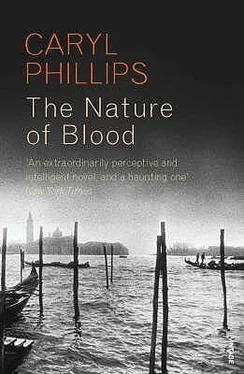
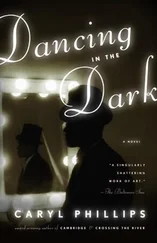

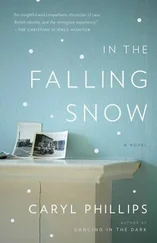
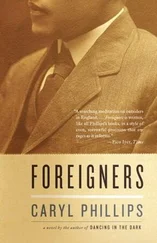

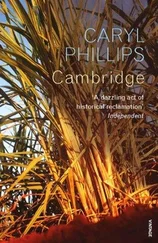
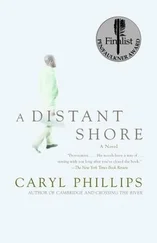
![Unknown - [Carly Phillips] The Bachelor (The Chandler Brothe(Bookos.org) (1)](/books/174132/unknown-carly-phillips-the-bachelor-the-chandle-thumb.webp)



